On the Idempotence of Instagram Filters
by William Jackson on 2013-07-11
While I was recently posting a photo to Instagram, I had cause to wonder what would happen if I applied the same filter to a photo multiple times. My wonder was caused by an interesting side effect of the appʼs workflow on my phone.
The typical steps to take when posting to Instagram are these:
- Tap the “take a photo” button.
- Compose a photo and tap the shutter button to take the photo.
- Optionally apply a filter, border, and other effects to the photo.
- Optionally add a caption, tag people, add a location, and select social media sites to send the photo to.
- Upload to Instagram.
However, something happens behind the scenes between steps 3 and 4: the app saves a copy of the edited photo to the phone. I have found this useful in the past, particularly when I get to the captioning step and have to switch out of the app to do something else. When I get back to the app I have often lost my work and need to compose a photo all over again. But instead of taking a new photo (and editing it again) I can browse my phone and find the photo I edited the first time.
At this point, the app does not know I just loaded a photo that the app itself created moments ago, so I get the option to apply a filter and otherwise edit the photo again. So I began to wonder what would happen if I took advantage of this to apply multiple filters to a photo.
What Is Idempotence?
An operation is idempotent if it “can be applied multiple times without changing the result beyond the initial application.”
So, an Instagram filter is idempotent if, after the first application, any subsequent application of the same filter does not change the photo in any way. Applying the same filter several times is the same as applying the filter once.
My gut feeling is that Instagram filters are not idempotent, and if I apply a filter to the same photo over and over the photo will look crazier and crazier. Letʼs see if I am right.
The Trilby
Weʼll start with a boring photo of this fine trilby.

For this exercise I chose the Amaro filter. I liked how it helped bring out the pinstripes on the hat. Here is the original photo with no filter (top-left), Amaro applied once (top-right), twice (bottom-left), and thrice (bottom-right).
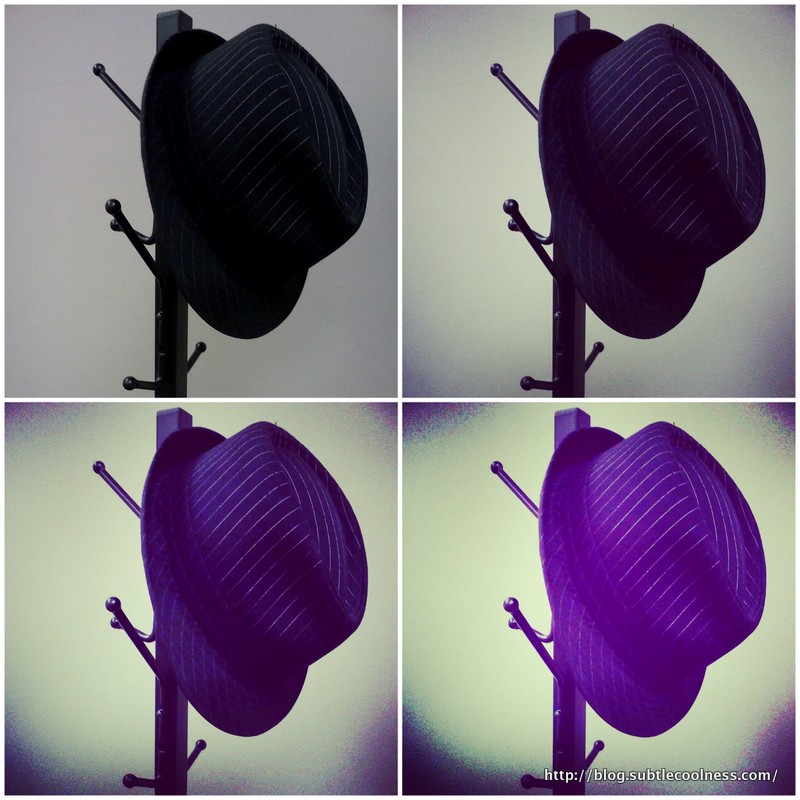
Already the photo is getting out of control. My hat is turning violet! And I was right, Amaro really brings out the pinstripes. Also, the filters are not idempotent. But I kind of expected that anyway, I just needed an excuse to play around with multiple filters!
But maybe after a few more applications of the filter, the photo will stabilize. Letʼs keep going. Here is the same photo with Amaro applied four, five, six, and seven times (top-left, top-right, bottom-left, bottom-right, respectively).
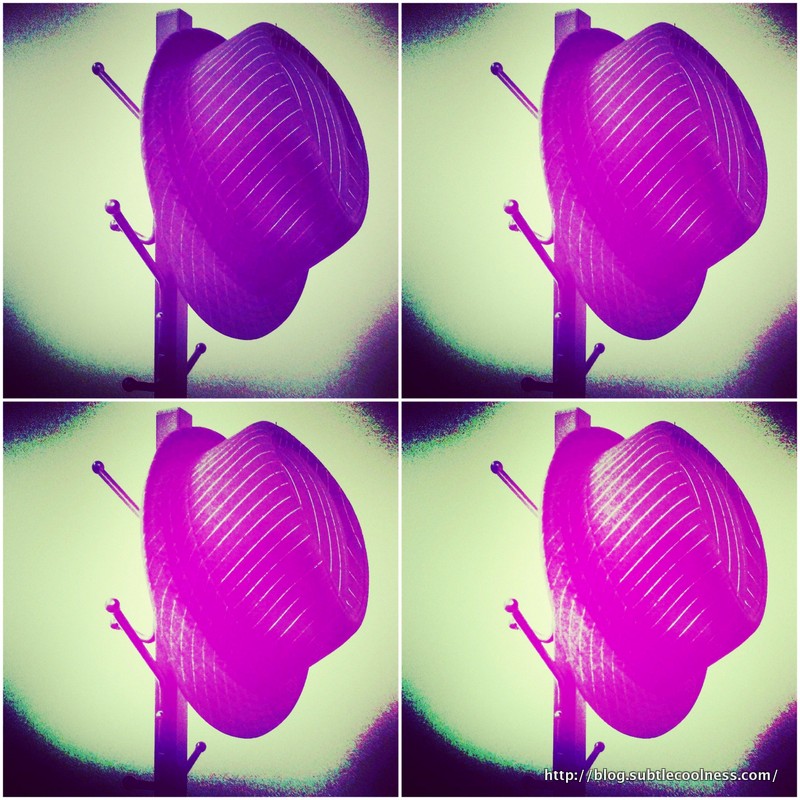
There is still a fair bit of difference between Amaro ×4 and Amaro ×7. Weʼre giving up violet and moving into the reds. What next?
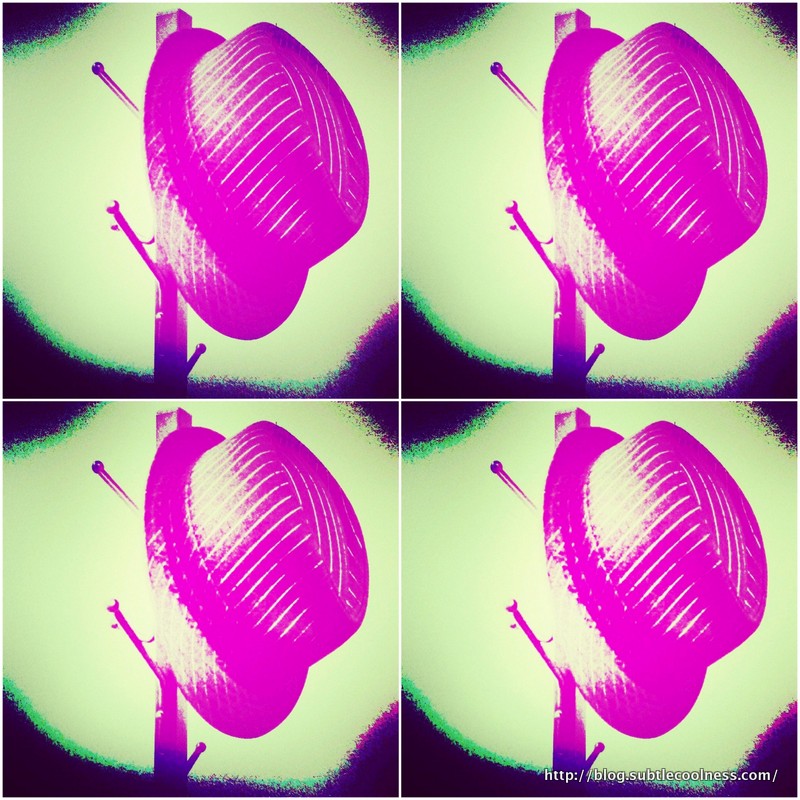
The changes are slowing down now, but it is still easy to see differences.
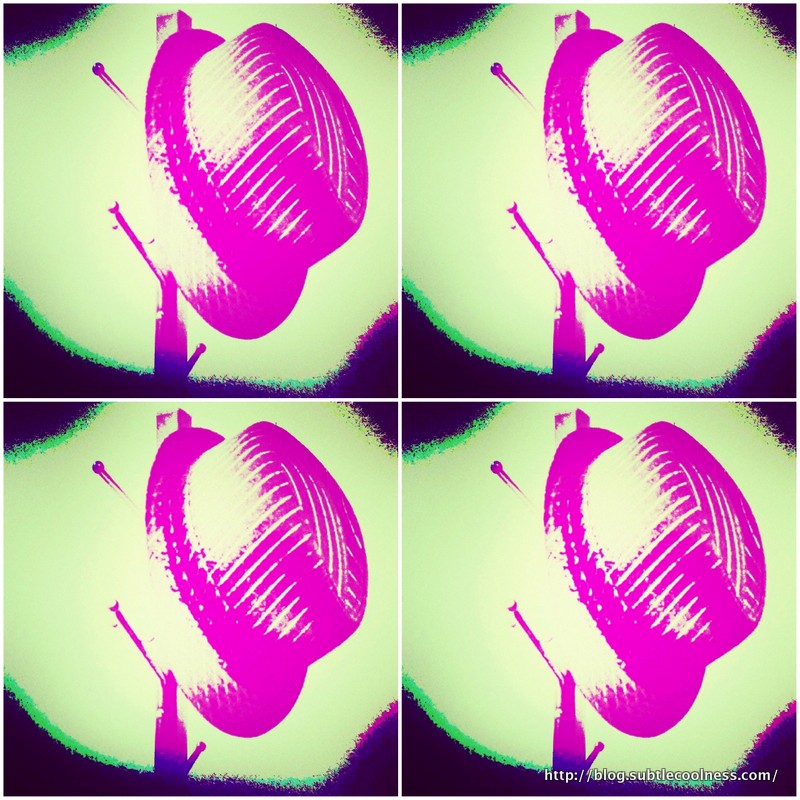
Now we are all the way up to Amaro ×15 (bottom-right). It is almost indistinguishable from Amaro ×14. Weʼll stop here.
All the Filters?
While weʼre at it, how about one more crazy experiment before weʼre through? What happens when every filter is applied to a photo? Here is the original photo with filters applied cumulatively in this order: Amaro, Mayfair, Rise, Hudson, Valencia, X-Pro II, Sierra, Willow, Lo-Fi, Earlybird, Sutro, Toaster, Brannan, Inkwell, Walden, Hefe, Nashville, 1977, and Kelvin.
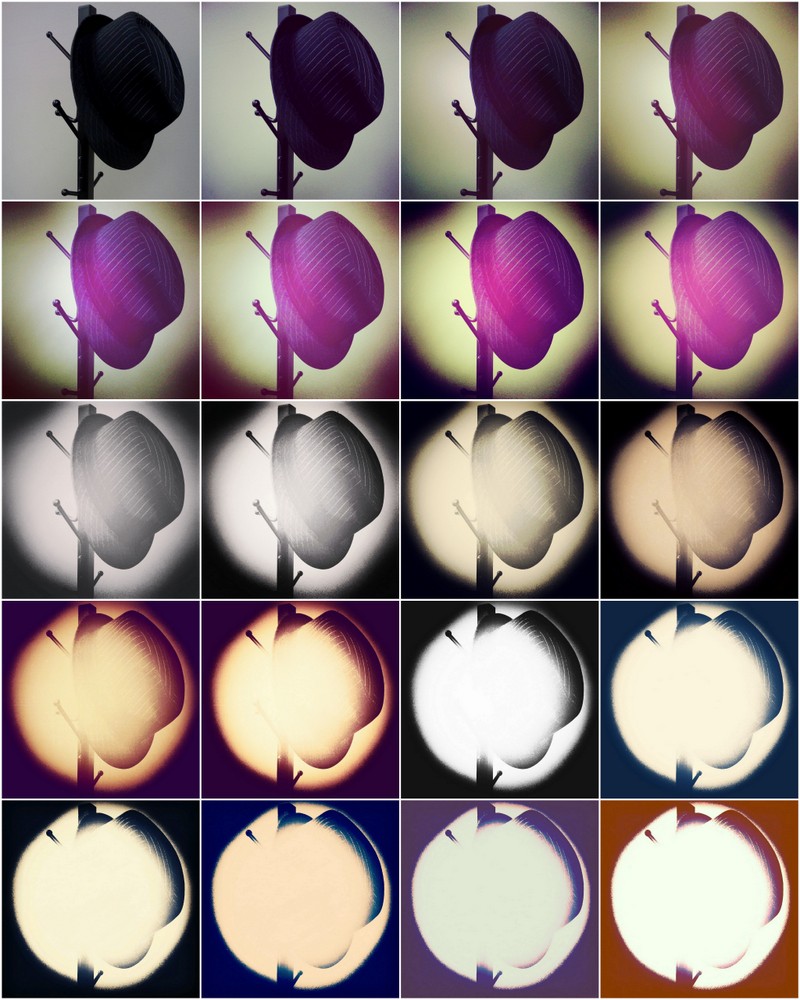
About halfway through we can still kind of tell it is a trilby, but by the time we get to the last four filters, who can tell what that is a photo of? Nobody, thatʼs who.
Obviously, applying every filter at once is overkill and no one is going to do it. But we might get good results from combining two or three filters. I wonder if the app will ever support selecting multiple filters natively. It might make a useful addition, but it also might make more people over-filter their photos and that would just make me sick.
Better keep this little trick between us.